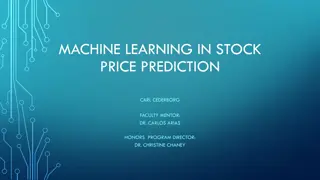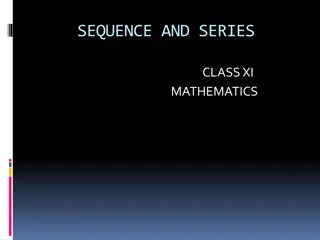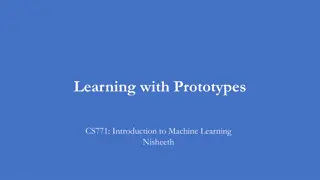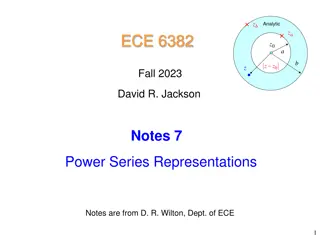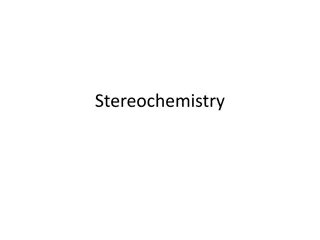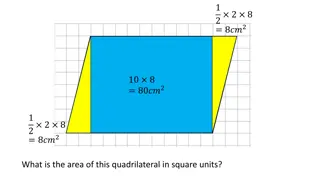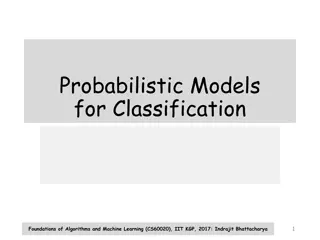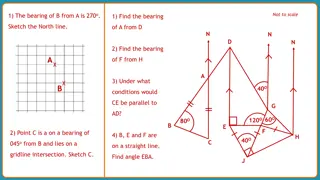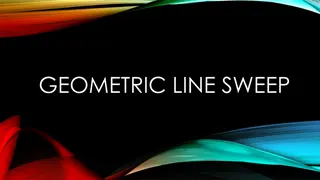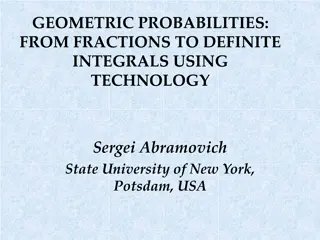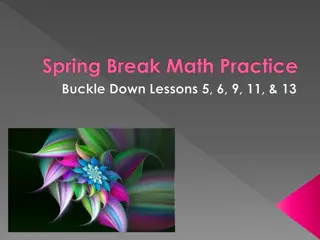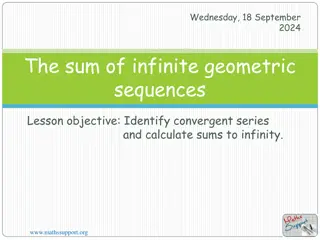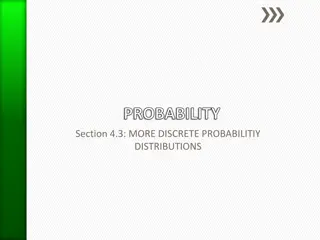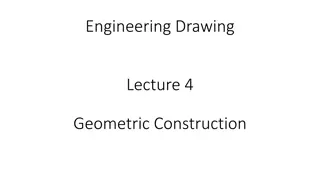Geometric Approach to Classification Techniques in Machine Learning
Explore the application of geometric view in advanced classification techniques as taught by David Kauchak in CS 159. Understand how data can be visualized, features turned into numerical values, and examples represented in a feature space. Dive into classification algorithms and discover how to classify examples based on the closest labels.
Download Presentation

Please find below an Image/Link to download the presentation.
The content on the website is provided AS IS for your information and personal use only. It may not be sold, licensed, or shared on other websites without obtaining consent from the author.If you encounter any issues during the download, it is possible that the publisher has removed the file from their server.
You are allowed to download the files provided on this website for personal or commercial use, subject to the condition that they are used lawfully. All files are the property of their respective owners.
The content on the website is provided AS IS for your information and personal use only. It may not be sold, licensed, or shared on other websites without obtaining consent from the author.
E N D
Presentation Transcript
ADVANCED CLASSIFICATION TECHNIQUES David Kauchak CS 159 Spring 2023
Admin Assignment 7 Next Monday: project proposal presentations informal 1 minute See the final project handout for details Hack week QA session from OpenAI engineer (Friday @ 12:30pm) https://5chack.com/#hack-week
Apples vs. Bananas Weight Color Label 4 Red Apple 5 Yellow Apple Can we visualize this data? 6 Yellow Banana 3 Red Apple 7 Yellow Banana 8 Yellow Banana 6 Yellow Apple
Apples vs. Bananas Turn features into numerical values Weight Color Label B A 1 B A B 4 0 Apple Color 5 1 Apple 6 1 Banana A A 3 0 Apple 0 7 1 Banana 8 1 Banana Weight 0 10 6 1 Apple We can view examples as points in an n-dimensional space where n is the number of features called the feature space
Examples in a feature space feature2 label 1 label 2 label 3 feature1
Test example: what class? feature2 label 1 label 2 label 3 feature1
Test example: what class? feature2 label 1 label 2 closest to red label 3 feature1
Another classification algorithm? To classify an example d: Label d with the label of the closest example to d in the training set
What about this example? feature2 label 1 label 2 label 3 feature1
What about this example? feature2 label 1 label 2 closest to red, but label 3 feature1
What about this example? feature2 label 1 label 2 Most of the next closest are blue label 3 feature1
k-Nearest Neighbor (k-NN) To classify an example d: Find k nearest neighbors of d Choose as the label the majority label within the k nearest neighbors
k-Nearest Neighbor (k-NN) To classify an example d: Find knearest neighbors of d Choose as the label the majority label within the k nearest neighbors How do we measure nearest ?
Euclidean distance Euclidean distance! (or L1 or cosine or ) (b1, b2, ,bn) (a1, a2, , an) D(a,b)= (a1-b1)2+(a2-b2)2+...+(an-bn)2
Decision boundaries The decision boundaries are places in the features space where the classification of a point/example changes label 1 label 2 label 3 Where are the decision boundaries for k-NN?
k-NN decision boundaries label 1 label 2 label 3 k-NN gives locally defined decision boundaries between classes
Nearest Neighbour (k-NN) Classifier What is the decision boundary for k-NN for this one?
Machine learning models Some machine learning approaches make strong assumptions about the data If the assumptions are true this can often lead to better performance If the assumptions aren t true, they can fail miserably Other approaches don t make many assumptions about the data This can allow us to learn from more varied data But, they are more prone to overfitting (biasing too much to the training data) and generally require more training data
Model assumptions If you don t have strong assumptions about the model, it can take you a longer to learn Assume now that our model of the blue class is two circles
What is the data generating distribution? Knowing the model beforehand can drastically improve the learning and the number of examples required
Machine learning models What were the model assumptions (if any) that k-NN and NB made about the data? Are there training data sets that could never be learned correctly by these algorithms?
Linear models A strong assumption is linear separability: in 2 dimensions, you can separate labels/classes by a line in higher dimensions, need hyperplanes A linear model is a model that assumes the data is linearly separable
Hyperplanes A hyperplane is line/plane in a high dimensional space What defines a line? What defines a hyperplane?
Defining a line Any pair of values (w1,w2) defines a line through the origin: 0=w1f1+w2f2 f2 f1
Defining a line Any pair of values (w1,w2) defines a line through the origin: 0=w1f1+w2f2 f2 0=1f1+2f2 f1 What does this line look like?
Defining a line Any pair of values (w1,w2) defines a line through the origin: 0=w1f1+w2f2 f2 0=1f1+2f2 f1 1 0.5 0 -0.5 -1 -2 -1 0 1 2
Defining a line Any pair of values (w1,w2) defines a line through the origin: 0=w1f1+w2f2 f2 0=1f1+2f2 f1 1 0.5 0 -0.5 -1 -2 -1 0 1 2
Defining a line Any pair of values (w1,w2) defines a line through the origin: 0=w1f1+w2f2 f2 (1,2) 0=1f1+2f2 f1 w=(1,2) We can also view it as the line perpendicular to the weight vector
Classifying with a line Mathematically, how can we classify points based on a line? 0=1f1+2f2 f2 BLUE (1,1) f1 RED (1,-1) w=(1,2)
Classifying with a line Mathematically, how can we classify points based on a line? 0=1f1+2f2 f2 BLUE 1*1+2*1=3 (1,1): (1,1) 1*1+2*-1=-1 (1,-1): f1 RED (1,-1) w=(1,2) The sign indicates which side of the line
Defining a line Any pair of values (w1,w2) defines a line through the origin: 0=w1f1+w2f2 f2 0=1f1+2f2 f1 How do we move the line off of the origin?


